In week 9 we were asked to present a ‘Pecha Kucha’ (20 slides, each 20 seconds each) on any aspect of design in History. I chose the infamous fashion photographer/ photo journalist Richard Avedon.
Personally I struggled with this assignment, after extensive research into the life of this marvellous photographer there was just so much information & images that I wanted to share to the audience but condensing it into 20 second concise points with only 20 slides, I found this very difficult. But in the end I think I did well to eliminate some of the lessor points and focus on the main information I wanted to convey to the audience.
Despite practising my presentation at home, & due to nerves on the day some of my points did go over the 20 second mark, but I quickly finished that sentence and moved on to the next point with each change of slide. If I were to re-do the presentation, I would reduce my points even more, so I could talk slower and clearer and not feel pressured by the 20 second limit.
On the positive side, this assessment allowed us as students to select an area of design in which we favoured & to expand out knowledge on the subject. We also were able to learn about other areas of design by watching other students presentations which I found very interesting.
Below is my Pecha Kucha points with images of the slides:
- Richard Avedon was an inventive fashion photographer of the twentieth century. He is notorious for his untraditional style of portraiture which he brought to the fashion world by working for numerous fashion magazines including Vogue, Life Magazine & Harper’s Bazaar. He blurred the line between commercial and art photography by utilising movement & emotion.

- Avedon’s passion for photography began when he was just a child, his father taught Avedon about cameras in the late 1920s with his ‘Eastern Kodak Box Brownie’. Avedon would capture countless portraits of his sister with his father’s camera. “She was always dressed up and photographed”. As Avedon says in an interview to Charlie Rose in 1993 “I think I was a photographer before I knew I was a photographer.”

- It was early on that Avedon discovered the notion that photographs did not depict the truth. His mother would dress them in fancy attire for family portraits and make them hold dogs in which they didn’t own, thus depicting a false reality in which he took on-board for his whole career. This can be seen in his street portraits with models ‘acting’ emotions & scenarios. For example, this photograph taken by Avedon in 1947, where the male model is ‘acting’ to be flattered by what the female model is wearing.

- Avedon’s father owned a woman’s clothing boutique on 5th Avenue, in which fashion Magazines like Harper’s Bazaar & Vogue were always present. As an adolescent, he would pick his favourite photos, tear them out and stick them on the walls of his room. He grew up surrounded and influenced by the great photographers of the 1930’s, like Martin Munkacsi & Edward Steichen.

- To his father’s opposition he dropped out of high school and joined the Merchant Marines making identification portraits, “mugshots” of the crewman. Two years later he left the armed forces to study with photographer & graphic designer Alexey Brodovitch at the New School of Social Research. Brodovitch saw great potential in Avedon & in 1944 he endorsed Avedon to work for him at Harper’s Bazaar. Here are a few of Brodovitch’s designs on the right.

- Brodovitch is known for his revolutionary modern graphic design techniques. He uses a combination of elegantphotographs, sharp serif typefaces, and striking white space arranged on a double page spread upon which all interact in some way. This slide is a combination of Brodovitch’s & Avedon’s work in Harper’s Bazaar Magazine.

- Avedon’s career took off in 1948, he travelled to Paris with intentions to photograph Couturier’s Second Show. Unlike most photographers of that time Avedon captured emotion, movement and scenes. He rebelled against the traditions of photography by taking to the streets, utilising it as his canvas; he photographed fashion models posing in high end bars, circus arenas & casinos.

- As stated by British Fashion writer Colin Mcdowell “It was, in itself a new look and, although traditionalists in Paris tut-tutted, it was clear that Richard Avedon had, in one season, completed what Dior had started in 1947.” Dovima with Elephants is one of Avedon’s most famous fashion portraits & sold for a over one million dollars in 2010 at Christies Art Auction.

- This new way of photographing fashion contradicted the statue like portraits in which design was accustomed to. For example, Horst P Horst’s photography for Vogue in the early 1900s, the models were very much statue alike showing no emotion or movement demonstrating immense differences in design aesthetic.
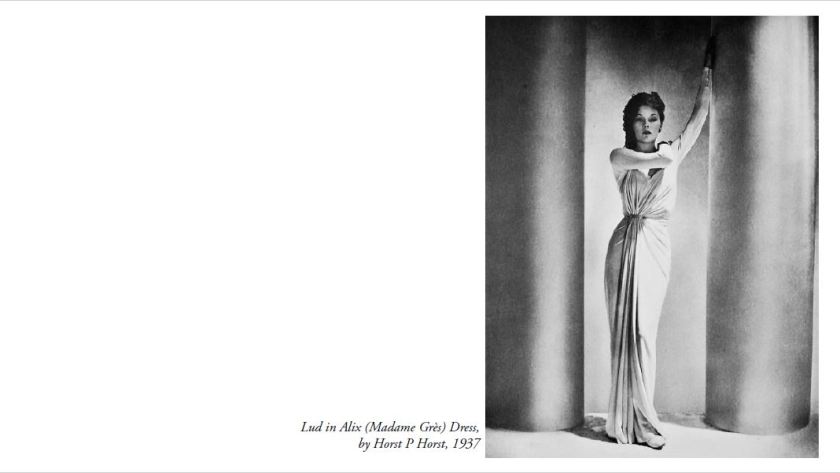
- Avedon grew up in a female dominated household he was very aware of the fragility between women and their clothing, he portrayed this in his photographs. Women could now relate and envision themselves in such scenarios & clothing, like never before. In an interview to Charlie Rose in 1993 Avedon expresses how he would witness females mimicking the emotions & movements of his photographs as they walked 5th Avenue in style.

- Prior to Avedon, models were famous for their ‘remote’ emotionless look, they were perceived as mannequins, flawless showgirls, unskilled and had no prestige. Within this period the introduction of television allowed woman to mimic thrilling screen stars and fashion was no longer exclusive to the rich. Advertising photography like in Harper’s Bazaar reinforced this.
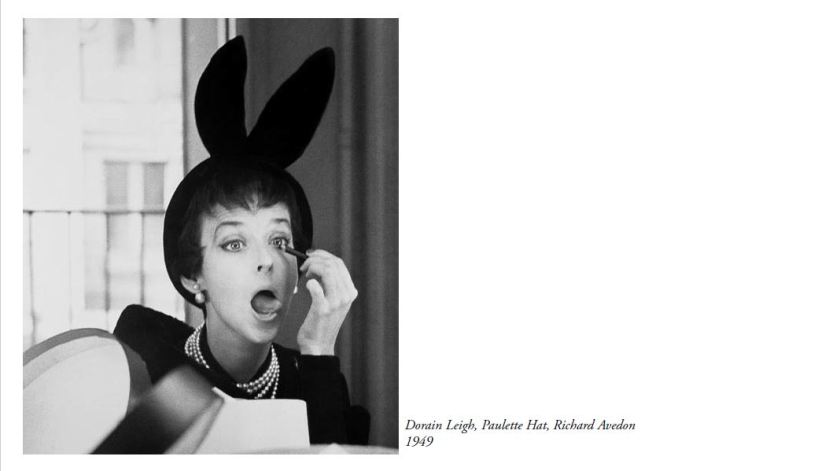
- Avedon whilst following his own style was always influenced by those before him. As shown here Avedon clearly mimics the components of Hungarian Photojournalist ‘Martin Munkasci’s “Puddle Jumper” on the left. Avedon has even named his photograph on the right there “Homage to Munkacsi”. So Avedon was constantly influenced by these photographers he had seen in his early life.

- According to American historian Anne Hollander, within Avedon’s works there is a cross-fertilisation between painting and photography. As stated in ‘The woman in the Mirror’ Avedon’s work of model Dovima is suggestive of a Zubarian’s ‘Saint Casilda’ painting of the 1640s. In both portraitures, the dresses have many folds, arms emerging from armlets and holding up their gowns each with an intense gaze of dignity and prestige.
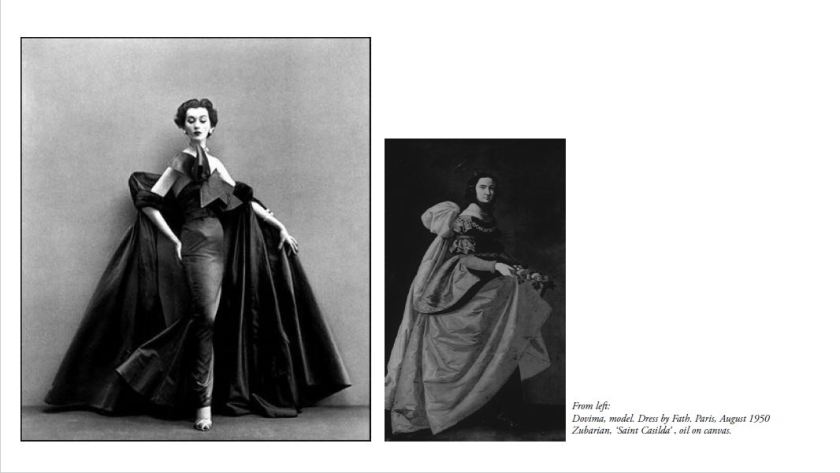
- Avedon, most famous for his fashion portraiture also considered himself as a photojournalist. In the 1960s, Avedon commenced a new political project under the title ‘Hard Times’. He travelled afar, photographing a variety of subjects who were all effected by the civil rights movement, the war in Vietnam, and the Chicago Seven conspiracy trial.

- Avedon faced increasing criticism from critics accusing him of exploiting his subjects by decontextualizing them & “staging” photographs. He used a white background as he had done in fashion portraiture for decades. This shocked the world as a reader reading a magazine on one page would see the glamour & riches of the upper class American society & on the next page, the napalm victim’s face shocks the reader.
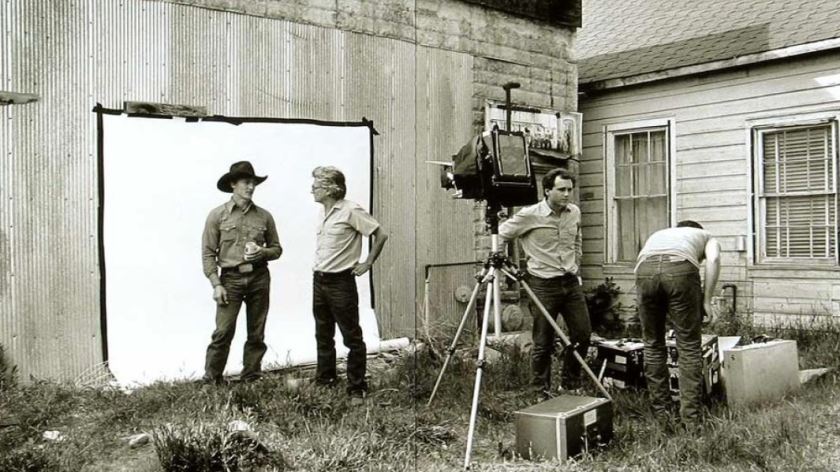
- Avedon faced even more criticism when he published a series of photographs in the late 1970s called “In the American West”. He created these photographs in a period when a severe recession was occurring in the West, towns were being abandoned, as men were going from town to town looking for jobs after the mining business plummeted. Again he decontextualizes his subjects, erasing the background and allowing only a few props.
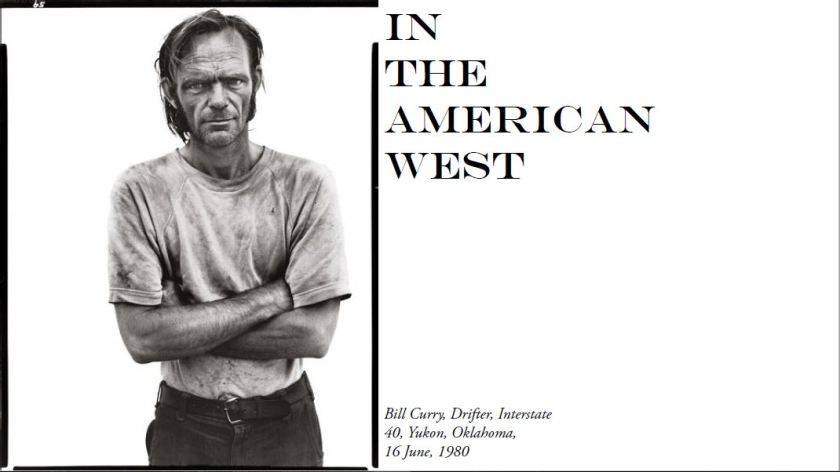
- As described by Poul Erik Tojner “Avedon not only observes these people, he is again the co-creator… In that sense he does a reverse Arnold Newman; they are all photographed with a neutral white background, and always in the shade to prevent shadows, highlighting something in particular and determining what the viewer is to focus on in the photograph.”
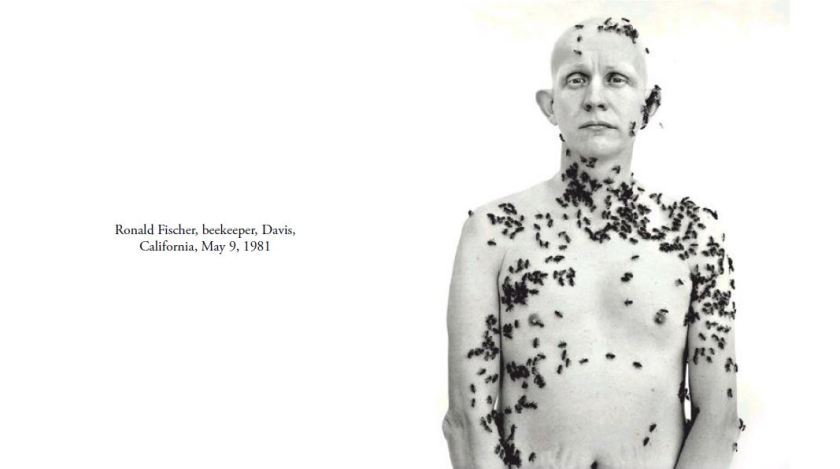
- Much alike his fashion photography, he wants the audience to not be distracted by a background and to emphasise the facial features and expressions of his subjects. This especially famous photograph of a 13-year-old boy who works as a rattle-snake skinner. The boy is on the verge of adolescence whilst his face both masculine & feminine, there is an essence of innocence yet his apron blood stained & expression unforgiving.

- Despite this sudden change from fashion photography Avedon continued photographing fashion mainly for Dior & Versace until his sudden death in 2004 while on assignment for The New Yorker. Pictured here is only one of a series of photographs that Avedon created in 1995 depicting a love affair of Mr. & Mrs. Comfort, some say the work is Avedon’s personal farewell to fashion photography.

- Even after Avedon’s death, his legacy lives on & as described by Andy Grundberg of the New York Times in an obligatory about Avedon; “His fashion and portrait photographs helped define America’s image of style, beauty and culture for the last half-century”.

Bibliography
A.G Nauia Couture, 2013. Lud, a Russian Exile, one of Horst P. Horst’s favorite Models. [Online]
Available at: https://agnautacouture.com/2015/10/04/lud-a-russian-exile-was-horst-p-horst-favorite-model/
[Accessed 12 September 2017].
Avedon, R. &. H. A., 2005. Woman in the Mirror. New York: HN Abrams.
Avedon, R., 1999. Charlie Rose [Interview] (26 November 1999).
Blythe, W., 2012. A New Look at Richard Avedon’s Portraits of the Powerful. [Online]
Available at: http://www.americanphotomag.com/new-look-richard-avedons-portraits-powerful
[Accessed 14 September 2017].
Chapman, C., 2013. The Avedon Effect. [Online]
Available at: http://www.portrait.gov.au/magazines/46/the-avedon-effect
[Accessed 8 September 2017].
Design is History, 2017. Alexey Brodovitch. [Online]
Available at: http://www.designishistory.com/1940/alexey-brodovitch/
[Accessed 12 September 2017].
Dyer, G., 2013. Dovima with elephants, evening dress by Dior, Cirque d’Hiver, Paris, August 1955. [Online]
Available at: http://100photos.time.com/photos/richard-avedon-dovima-with-elephants
[Accessed 12 September 2017].
Frank, A., 2014. On Richard Avedon: Truman Capote’s 1959 Essay on the Master Photographer. [Online]
Available at: https://www.vogue.com/article/truman-capote-essay-richard-avedon-1959
[Accessed 2017 September 12].
Gagosian Gallery, 2013. Avedon: Women. [Online]
Available at: https://www.nowness.com/story/avedon-women
[Accessed 2017 August 2017].
Gagosian, 2016. Richard Avedon. [Online]
Available at: https://www.gagosian.com/artists/richard-avedon
[Accessed 21 August 2017].
Gallagher, J. G., 2007. Alexey Brodovitch: 1934-1958. [Online]
Available at: http://www.harpersbazaar.com/culture/features/a94/bazaar-140-0607/
[Accessed 12 September 2017].
Gallagher, J. G., 2007. THE AVEDON YEARS: 1945-1965. [Online]
Available at: http://www.harpersbazaar.com/culture/features/a177/bazaar-140-0907/
[Accessed 21 August 2017].
Grunberg, A., 2004. Richard Avedon, the Eye of Fashion, Dies at 81. [Online]
Available at: http://www.nytimes.com/2004/10/02/obituaries/richard-avedon-the-eye-of-fashion-dies-at-81.html
[Accessed 14 September 2017].
Highsnobiety, 2016. Photographers Every Highsnobiety Reader Should Know: Horst P. Horst. [Online]
Available at: https://www.highsnobiety.com/2016/01/27/horst-p-horst-biography/
[Accessed 26 September 2017].
History Graphic Design , 2016. Richard Avedon. [Online]
Available at: http://www.historygraphicdesign.com/the-modernist-era/modern-movement-in-america/928-richard-avedon
History Graphic Design, 2016. History Graphic Design. [Online]
Available at: http://www.historygraphicdesign.com/the-modernist-era/modern-movement-in-america/928-richard-avedon
[Accessed 14 September 2017].
Hom, M. &. A. R., 2007. Richard Avedon & Avedon photographs 1946-2004. Richard Avedon & Avedon photographs 1946-2004 ed. Denmark: Louisiana Museum of Modern Art.
Iconofgraphics, 2017. Alexey Brodovitch. [Online]
Available at: http://www.iconofgraphics.com/alexey-brodovitch/
[Accessed 12 Septemeber 2017].
International Center Of Photography, 2012. Martin Munkacsi. [Online]
Available at: https://www.icp.org/browse/archive/constituents/martin-munkacsi?all/all/all/all/0
[Accessed 14 September 2017].
Kim, E., 2014. 5 Lessons Richard Avedon Has Taught Me About Street Photography. [Online]
Available at: http://erickimphotography.com/blog/2014/09/26/5-lessons-richard-avedon-taught-street-photography/
[Accessed 21 August 2017].
Le Bazhaar, 2012. Le Bazhaar. [Online]
Available at: http://lebazhaar.com/2012/04/05/can-i-have-bunny-ears-for-easter/
[Accessed 12 September 2017].
LFI Magazine, 2014. RICHARD AVEDON. [Online]
Available at: http://lfi-online.de/ceemes/en/news/muenchen-avedon-1001021.html
[Accessed 14 Septemeber 2017].
Mcdowell, C., 2016. Richard Avedon, Dior and How They Changed Fashion Forever. [Online]
Available at: https://www.businessoffashion.com/articles/colins-column/how-richard-avedon-changed-fashion-forever
[Accessed 26 September 2017].
Monovisions, 2015. Biography: Fashion photographer Horst P. Horst. [Online]
Available at: http://monovisions.com/horst-p-horst/
[Accessed 12 September 2017].
Mooallem, S., 2017. Harper’s Bazaar. May, Issue 3653, pp. 268-273.
National Portrait Gallery, 2013. Richard Avedon People. [Online]
Available at: http://www.portrait.gov.au/exhibitions/richard-avedon-people-2013
[Accessed 8 September 2017].
Piepenbring, D., 2014. Anne Hollander 1930-2014. [Online]
Available at: https://www.theparisreview.org/blog/2014/07/09/anne-hollander-1930-2014/
[Accessed 27 September 2017].
Richard Avedon Darkness and Light. 1996. [Film] Directed by Helen Whitney. New York USA: Eagle Rock Entertainment.
Rogers, L. W., 2009. The Duke and Duchess of Windsor: We Are Not Amused. [Online]
Available at: https://lisawallerrogers.com/2009/10/09/the-duke-and-duchess-of-windsor-we-are-not-amused/
[Accessed 14 Septmeber 2017].
Sargeant, W., 1958. A Women Entering A Taxi In The Rain. [Online]
Available at: https://www.newyorker.com/magazine/1958/11/08/a-woman-entering-a-taxi-in-the-rain
[Accessed 21 August 2017].
Soloman, A., 2004. The Vision Thing. [Online]
Available at: http://andrewsolomon.com/articles/the-vision-thing/
[Accessed 21 August 2017].
Sunny Styles, 2012. Richard Avedon. [Online]
Available at: https://sunnystyles.wordpress.com/tag/paris/
[Accessed 12 September 2017].
The Editors of Encyclopædia Britannica, 2013. Alexey Brodovitch. [Online]
Available at: https://www.britannica.com/biography/Alexey-Brodovitch
[Accessed 2017 September 12].
The French Sampler, 2012. Fabulous Photographer Martin Munkacsi. [Online]
Available at: http://thefrenchsampler.blogspot.com.au/2012/05/fabulous-photographer-martin-munkacsi.html
[Accessed 1 October 2017].
The Invisible Agent, 2010. Great Early 1960’s Women’s Fashion Editorial. [Online]
Available at: https://theinvisibleagent.wordpress.com/tag/richard-avedon/
[Accessed 12 September 2017].
Wikipedia, The Free Encyclopedia, 2017. Richard Avedon. [Online]
Available at: https://en.wikipedia.org/wiki/Richard_Avedon
[Accessed 21 August 2017].
Zagala, S., 2013. The Existential Lens. [Online]
Available at: http://www.portrait.gov.au/magazines/46/the-existential-lens
[Accessed 8 September 2017].
